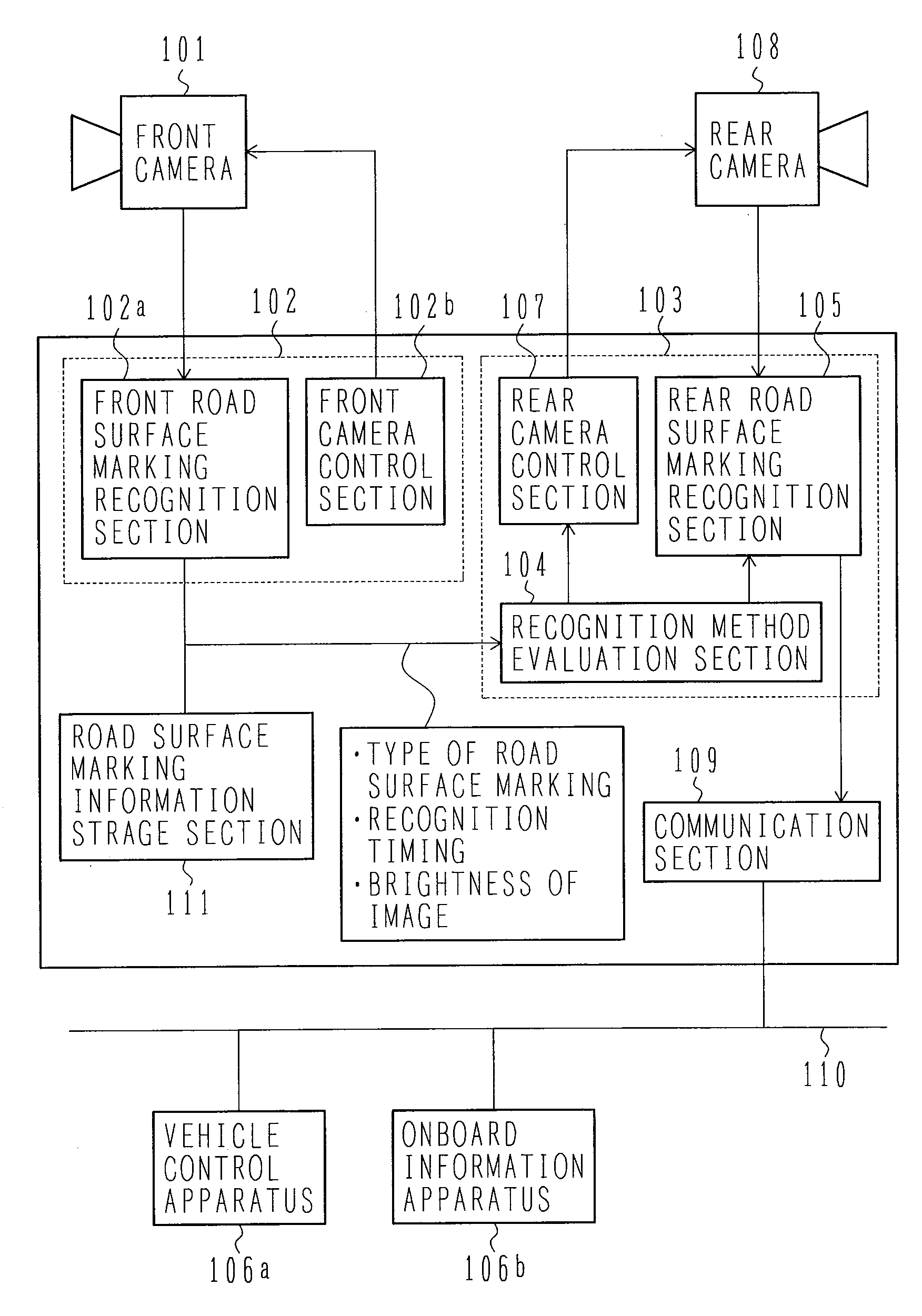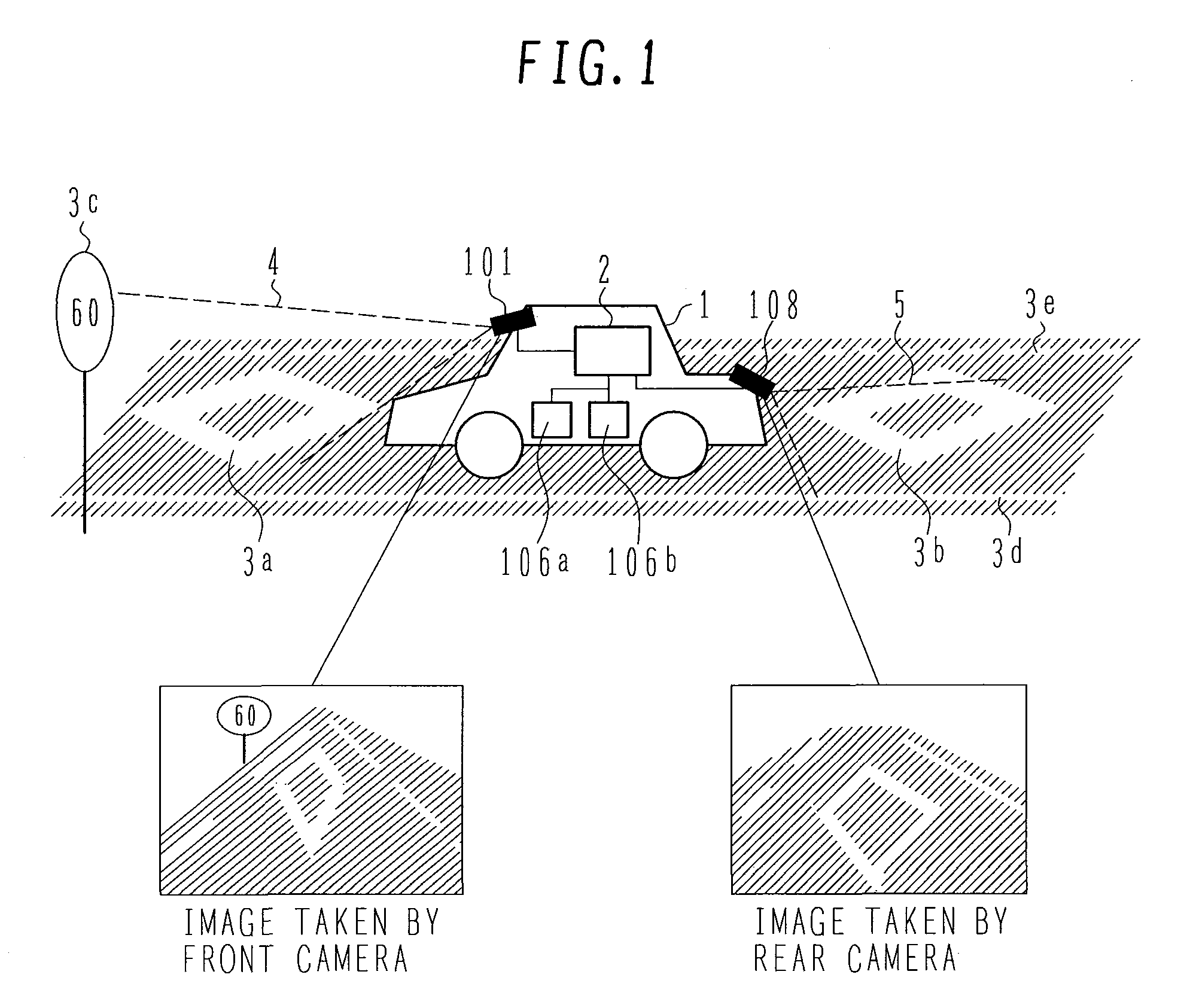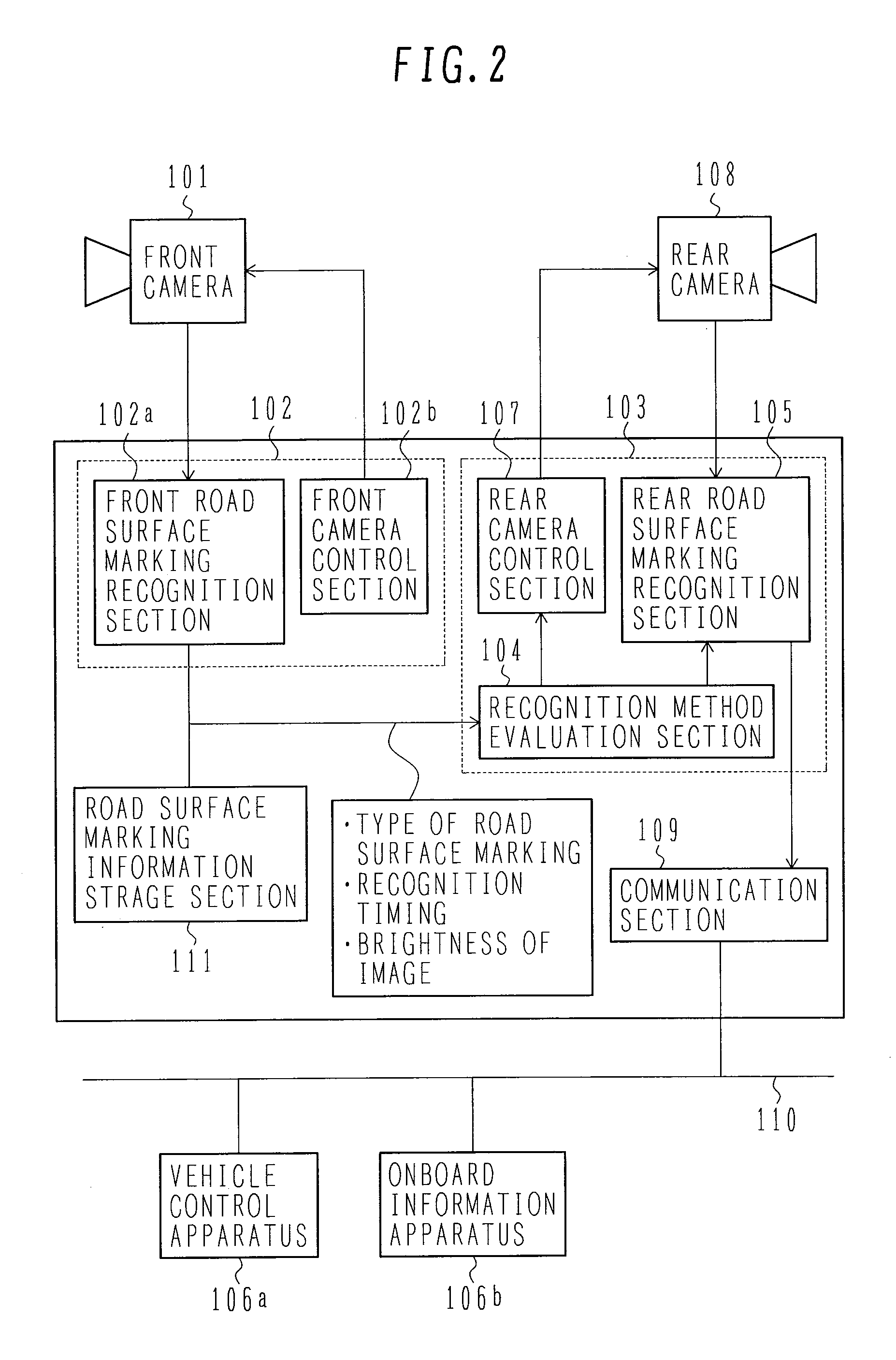Apparatus and System for Recognizing Environment Surrounding Vehicle
a technology for recognizing objects and vehicles, applied in television systems, navigation instruments, instruments, etc., can solve the problems of difficult to predict a specific position on the screen, difficult to improve a recognition rate, and reduce false recognition, so as to improve the recognition rate of objects and accurate recognition of objects. , the effect of reducing false recognition
- Summary
- Abstract
- Description
- Claims
- Application Information
AI Technical Summary
Benefits of technology
Problems solved by technology
Method used
Image
Examples
first embodiment
[0066] A first embodiment will be described as applied to a system recognizing road surface markings by using images taken by a rear camera mounted in a vehicle.
[0067]FIG. 1 is a view showing a system for recognizing an environment surrounding a vehicle according to the first embodiment. A vehicle 1 has a front camera 101 and a rear camera 108 mounted thereon. The front camera 101 takes an image of a view forward of the vehicle 1. The rear camera 108 takes an image of a view rearward of the vehicle 1. The front camera 101 is mounted such that a road surface falls within a field of view 4 of the front camera 101. The rear camera 108 is mounted such that the road surface falls within a field of view 5 of the rear camera 108.
[0068] Image information captured by the front camera 101 is inputted to a surrounding environment recognition apparatus 2. The surrounding environment recognition apparatus 2 recognizes a road surface marking 3a forward of the vehicle 1 based on the image inform...
second embodiment
[0168]FIG. 48 shows a hardware block diagram of a system for recognizing an environment surrounding a vehicle according to a second embodiment. Major differences from the first embodiment described with reference to FIGS. 1 through 47 include the following. Specifically, a front camera image recognition unit 102 is disposed inside a front camera 101; and a rear camera image recognition unit 103 is disposed in another vehicle control function 2510a or onboard information function 2510b. Accordingly, the same processes for recognizing and evaluating the surrounding environment as those of the first embodiment apply unless otherwise noted. Differences from the first embodiment will be described below.
[0169] The front camera 101 includes a lens 2501, an imaging device (CCD) 2502, a CPU 2503, and a memory (not shown). The front camera 101 achieves the function of the front camera image recognition unit 102 using the CPU 2503 and the memory. A rear camera 108, on the other hand, includes...
third embodiment
[0173]FIG. 49 shows a hardware block diagram of a system for recognizing an environment surrounding a vehicle according to a third embodiment. Major differences from the first embodiment described with reference to FIGS. 1 through 47 include the following. Specifically, a front camera image recognition unit 102 is disposed inside a front camera 101; and a rear camera image recognition unit 103 is disposed inside a rear camera 108. Accordingly, the same processes for recognizing and evaluating the surrounding environment as those of the first embodiment apply unless otherwise noted. Differences from the first embodiment will be described below.
[0174] The front camera 101 shares the same arrangement with that of the second embodiment, except that the front camera 101 according to the third embodiment is connected to the rear camera 108 via a dedicated signal line 2609.
[0175] The rear camera 108 includes a lens 2504, an imaging device (CCD) 2505, a CPU 2608, and a memory (not shown)....
PUM
 Login to View More
Login to View More Abstract
Description
Claims
Application Information
 Login to View More
Login to View More - R&D
- Intellectual Property
- Life Sciences
- Materials
- Tech Scout
- Unparalleled Data Quality
- Higher Quality Content
- 60% Fewer Hallucinations
Browse by: Latest US Patents, China's latest patents, Technical Efficacy Thesaurus, Application Domain, Technology Topic, Popular Technical Reports.
© 2025 PatSnap. All rights reserved.Legal|Privacy policy|Modern Slavery Act Transparency Statement|Sitemap|About US| Contact US: help@patsnap.com



